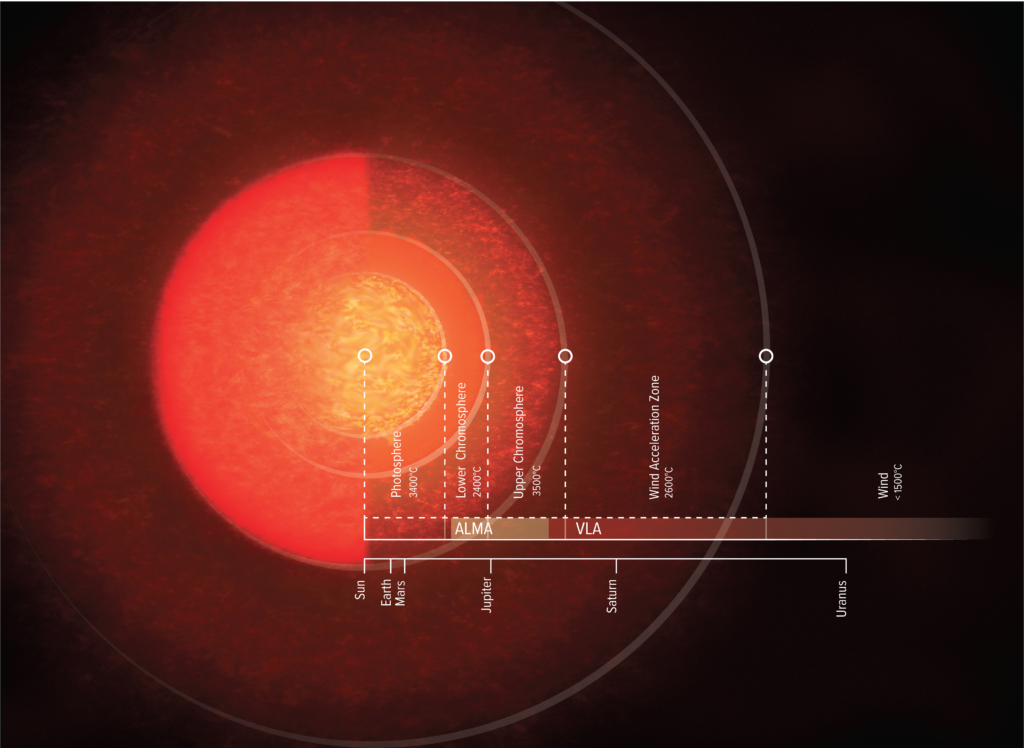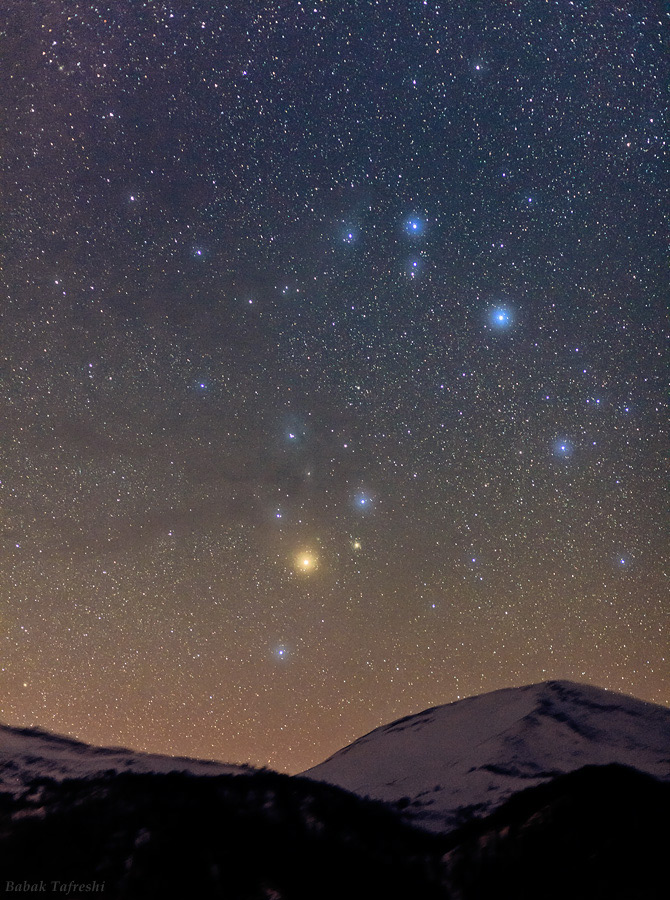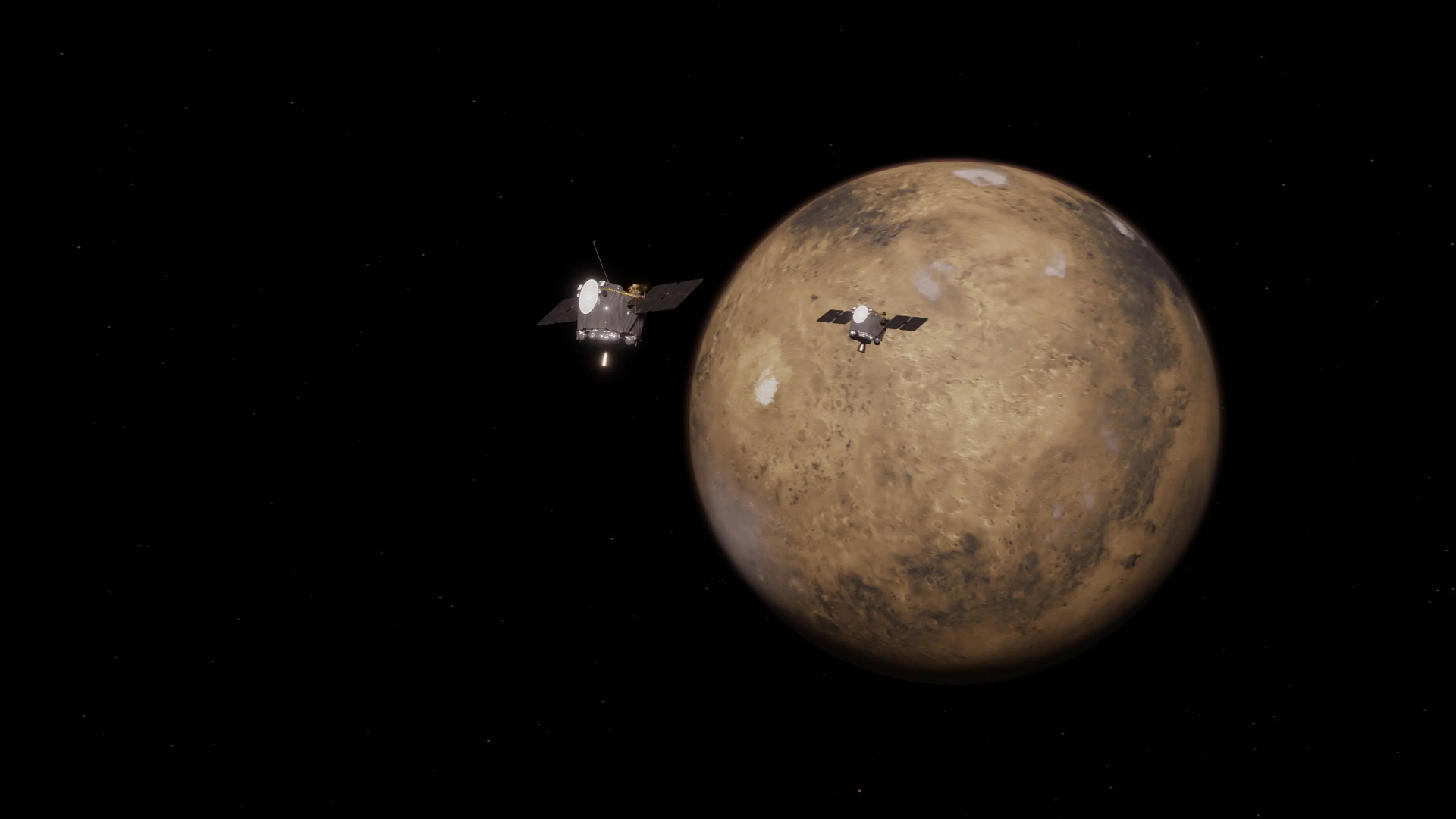New map reveals just how enormous the supergiant star Antares really is
Scientists thought it could fit 700 suns. It's actually bigger.
Astronomers have revealed the gigantic atmosphere of the red supergiant star Antares in stunning, unprecedented detail.
Using the Atacama Large Millimeter/submillimeter Array (ALMA) in Chile and the National Science Foundation's Karl G. Jansky Very Large Array (VLA) in New Mexico, an international team of researchers has created the most detailed radio map yet of Antares' atmosphere. In fact, this is the most detailed radio map ever created of any star other than our sun.
While Antares' diameter is about 700 times larger than the sun in visible light, this map revealed that, as seen in radio light, the star's atmosphere stretches even farther and is even more enormous. With this detailed map, the team found that Antares' chromosphere, a gaseous layer that creates a star's outer atmosphere along with its corona, stretches to 2.5 times the star's radius. For context, our sun's chromosphere only extends to 0.5% of our star's radius.
Related: These weirdo stellar corpses have creamy centers filled with exotic quantum liquids
"The size of a star can vary dramatically depending on what wavelength of light it is observed with," Eamon O'Gorman, a researcher at the Dublin Institute for Advanced Studies in Ireland and lead author of this study, said in a statement. "The longer wavelengths of the VLA revealed the supergiant's atmosphere out to nearly 12 times the star's radius."
To create this map, ALMA observed Antares' photosphere, or the layer that the majority of the stars' visible photons (light particles) stream from, in shorter wavelengths. The VLA observed the longer wavelengths in the star's atmosphere further out. The radio telescopes also observed and measured the temperatures of gas and plasma in the star's atmosphere. They were able to, for the first time, detect the chromosphere using radio waves and, not only did they find that it stretches 2.5 times the star's radius, they also found its temperature.
The team found that Antares' chromosphere is cooler than previous optical and ultraviolet observations suggested, peaking at 6,400 degrees Fahrenheit (3,500 degrees Celsius). This is significantly cooler than our sun's chromosphere, which is almost 36,032 degrees F (20,000 degrees C).
Breaking space news, the latest updates on rocket launches, skywatching events and more!
"We found that the chromosphere is 'lukewarm' rather than hot, in stellar temperatures," O'Gorman said in the same statement. "The difference can be explained because our radio measurements are a sensitive thermometer for most of the gas and plasma in the star's atmosphere, whereas past optical and ultraviolet observations were only sensitive to very hot gas and plasma."
"Our innate understanding of the night sky is that stars are just points of light. The fact we can map the atmospheres of these supergiant stars in detail, is a true testament to technological advances in interferometry. These tour de force observations bring the universe close, right into our own backyard," Chris Carilli of the National Radio Astronomy Observatory, who was not involved in this study but who was involved in the first observations of Betelgeuse at multiple radio wavelengths with the VLA in 1998, added in the same statement.
This study was published June 16 in the journal Astronomy & Astrophysics.
- Nearby star has strange cool layer like the sun
- Milky Way glitters over ALMA radio telescope in stunning photo
- Meet ALMA: Amazing photos from giant radio telescope
Follow Chelsea Gohd on Twitter @chelsea_gohd. Follow us on Twitter @Spacedotcom and on Facebook.
OFFER: Save 45% on 'All About Space' 'How it Works' and 'All About History'!
For a limited time, you can take out a digital subscription to any of our best-selling science magazines for just $2.38 per month, or 45% off the standard price for the first three months.

Chelsea “Foxanne” Gohd joined Space.com in 2018 and is now a Senior Writer, writing about everything from climate change to planetary science and human spaceflight in both articles and on-camera in videos. With a degree in Public Health and biological sciences, Chelsea has written and worked for institutions including the American Museum of Natural History, Scientific American, Discover Magazine Blog, Astronomy Magazine and Live Science. When not writing, editing or filming something space-y, Chelsea "Foxanne" Gohd is writing music and performing as Foxanne, even launching a song to space in 2021 with Inspiration4. You can follow her on Twitter @chelsea_gohd and @foxannemusic.



